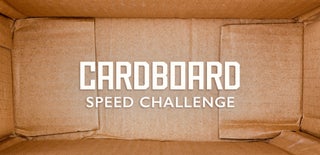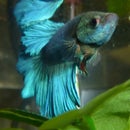Introduction: Tissue Box Camera Obscura
A camera obscura (sometimes referred to as a pinhole camera) is a device that can be used to project an image of an object or scene onto a screen. By simply pointing the camera obscura at an object and looking inside the device, you can see an upside-down image of the object projected on a screen inside the camera.
The camera obscura functions on an optical phenomenon that I will explain in the next step. It's an interesting demonstration of optics that's a lot of fun for people of all ages (it delighted me as a child). I will show you how you can easily make a cardboard camera obscura from tissue boxes, wax paper, and tape.
Step 1: Principle of Operation
Our camera obscura will consist of an empty box with a translucent screen in the middle and two holes on either end. The diagram illustrates a cutout view of the device. When light rays come from the object being observed (the tree), the rays pass through the hole on one end of the device and hit the screen in the middle of the box, forming an image.
- An image is formed because every spot on the screen is in line with a ray coming from a distinct part of the scene
- The box isolates the screen from any light other than the rays coming from the hole in the right end of the box
- The image formed is upside-down because the light rays criss-cross when they pass through the hole. The light from the top of the tree hits the bottom of the screen and the light from the bottom of the tree hits the top of the screen.
In order to view the image, the observer (the eye) looks through the opposite end of the box at the screen.
Step 2: Design
We only need a few household items to make our camera obscura box.
- Supplies
- 2 x empty tissue boxes (kleenex boxes)
- Wax paper (or any other thin translucent paper tissue)
- Masking tape or duct date (Must be opaque, so scotch tape will not work)
- Tools
- Scissors
- Needle
The two tissue boxes will make the two chambers on either side of the screen in our camera obscura box. The tissue boxes will be sandwiched together with the openings in their tops facing each other and the wax paper acting as the screen across the openings. The bottoms of the tissue boxes will be at the ends of the camera obscura device. The bottom of one box will have the aperture hole poked in it and the other will have the observation hole cut into it.
Step 3: Building the First Chamber
First we must build the portion of the camera obscura device that the rays from the object being observed will enter before they hit the screen.
- Taking one of the tissue boxes, remove the plastic around the opening
- Cut out the wax paper in a square that will go over the top of the box and tape it down
- Puncture a hole with the needle in the center of the bottom of the box. Preferably use a fairly large needle. The hole can be enlarged with the tip of a sharpened pencil. A range of hole diameters can work, but around 2mm is the maximum recommended diameter. (The picture shows a slightly larger hole than you need.) Make sure that you keep the hole clean, without any stray cardboard fibers.
Step 4: Build the Second Chamber
The second chamber is the dark chamber through which we observe the screen.
- Take the second tissue box and also remove the plastic from the opening
- Cut a hole large enough to see through in the bottom of the box
Step 5: Join the Chambers
The two chambers are joined together with the screen in the middle.
- Place the two tissue boxes facing each other with the screen in the middle and tape them together
- Place tape around the edges of the boxes. We are trying to stop extra light from leaking in from gaps in the cardboard. Look through the observation hole into the box and note any places along the edges or corners where light may be coming in and tape over those areas.
Step 6: Try It Out!
Our tissue box camera obscura is finished! In order to use it, face the aperture hole towards a brightly lit object and look through the observation hole. You should be able to see an upside-down image of the scene in front of you on the wax paper screen inside the box.
Step 7: Tips, Tricks, and Troubleshooting
If you look inside the box and don't see anything, try some of these tricks:
- The image is projected onto the screen entirely by light coming off of the scene being observed, so make sure that the scene is as bright as possible
- Keeping the camera obscura box in the shade while facing a bright scene will help a lot with being able to see the image with good contrast
- If the image is too dim or is very small, try widening the aperture hole
- Make sure to press your eye up to the observation hole and not let any light pollution come in
around you through the observation hole into the box
And another note: This device can be used to view solar eclipses!
Facing the camera obscura at the sun will allow you to safely observe the sun (as shown in the picture). Of course, when there is no eclipse, all you will see is a small circle. But during a solar eclipse, you will able to see the sun change shape. This is actually the method that was used historically to make observations of eclipses before people had eclipse glasses to protect their eyes from the sun's rays.
I hope you enjoy this awesome-yet-simple device. It's easy to make and a fun way to learn a little science!

Participated in the
Cardboard Speed Challenge











